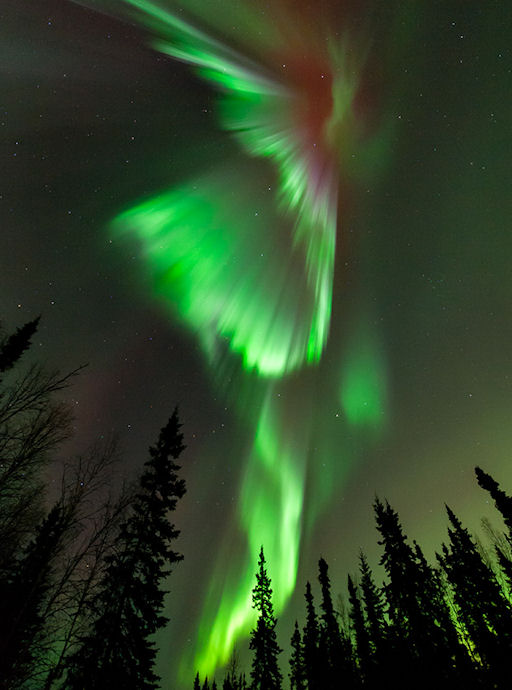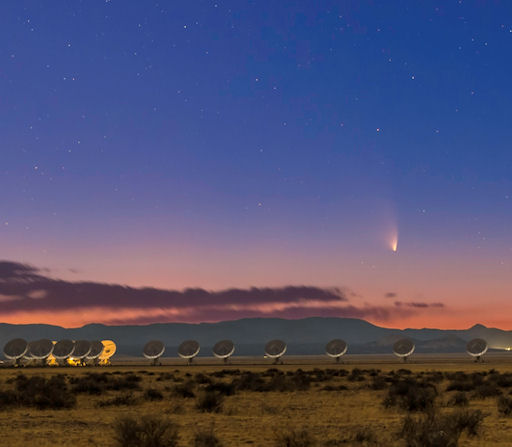Hang the Transit of Venus on your wall! Hubble-quality images from NASA's Solar Dynamics Observatory are now available as metallic posters in the Space Weather Store. | | |
ADVERTISE AT THE EDGE OF SPACE: Spaceweather.com is pleased to announce a unique advertising opportunity. We will launch your ad banner or product to the edge of space itself. Take a look at this running shoe or this bobble-head figure. That could be be your product or message! In collaboration with Earth to Sky Calculus, a student-run corporation based in Bishop, California, Spaceweather.com will launch a helium research balloon to 120,000 feet where your ad can be photographed against the limb of the Earth. Liftoff is scheduled for 9 am on April 22nd, Earth Day 2013! Contact Dr. Tony Phillips for pricing and details.
MARCH EQUINOX: The seasons are changing. Tomorrow, March 20th, the sun crosses the celestial equator heading north. This marks the beginning of Spring in the northern hemisphere and Autumn in the southern hemisphere. At this time of year, day and night are of nearly equal length, hence the name "equinox" (equal night). Best of all, Spring is aurora season. Aurora alerts: text, voice.
ST. PATRICK's DAY CME IMPACT: As predicted, a CME hit Earth's magnetic field during the early hours of March 17th, sparking a geomagnetic storm (Kp=6) and bright auroras at high latitudes. "What a great and green way to begin St. Patrick's Day!" says Dennis Mammana, who sends this picture from Fairbanks, Alaska:

"The CME kept us aurora photographers hopping all night long," says Mammana. "The only reason I gave up around 2 a.m. is that I ran out of memory cards for my digital camera! One of the most lovely auroral shapes--the corona--occurred one after the other after the other and was one of the prettiest displays Ive seen in many years."
The storm is subsiding now, but more auroras could be in the offing. A solar wind stream is due to brush against Earth's magnetic field on March 19-20. The impact won't be as strong as that of the March 17th CME. It should be enough, however, to spark some more Arctic lights. Aurora alerts: text, voice.
Realtime Aurora Photo Gallery
COMET PAN-STARRS UPDATE: As it emerges from the glare of the evening sun, Comet Pan-STARRS is becoming even more photogenic. Last night, March 17th, Alan Dyer caught it setting behind the Very Large Array, a radio telescope in Socorro, New Mexico:

Movie-goers will remember seeing the VLA in Carl Sagan's movie Contact starring Jodie Foster. Among astronomers, the array is even more famous for real-life scientific discoveries. On March 17th, the great telescope was window dressing for a comet.
"Light from the nearly quarter Moon high in the sky illuminated the landscape and highlighted the rims of the 27 dishes of the VLA," says Dyer. "Fortunately, the array was arranged in its most compact formationfor easy photography – at times the dishes can be spread out over many miles."
"The comet appeared in deep twilight," he continues. "A classic curving dust tail is now obvious in photos. This comet will bear watching and shooting over the next month, no matter where you are in the northern hemisphere."
For casual sky watchers: A growing number of people are reporting that they can see Comet Pan-STARRS with the naked eye. Best estimates place the magnitude of the comet at +0.2, about twice as bright as a 1st magnitude star. As the comet moves away from the sun, its visibility is improving. Observing tip: Step outside about an hour after sunset and face west. Pinpoint the comet using binoculars. Once you know where to look, put the optics aside and try some naked-eye observing. [sky map]
More: NASA video, 3D orbit, ephemeris, light curves.
Realtime Comet Photo Gallery
Realtime Space Weather Photo Gallery
Realtime Noctilucent Cloud Photo Gallery
[previous years: 2003, 2004, 2005, 2006, 2007, 2008, 2009, 2011]

